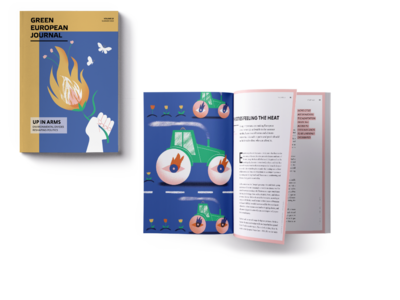Global military expenditure reached a record high in 2022, with the United States, China, and Russia accounting for 56 per cent of total expenditure. With annual military expenditure increasing to around 2.24 trillion dollars, it is more vital than ever that military- and conflict-related emissions are addressed within the UN’s Framework Convention on Climate Change (UNFCCC).
Armed conflicts and military activities can be highly destructive for the environment. Russia’s invasion of Ukraine has elevated global media attention on the humanitarian, environmental, and societal impact of the war, with media reporting on the environmental consequences beyond the scale of other contemporary conflicts. This attention is welcomed, but significant data and knowledge gaps remain on the overall contribution that even day-to-day military activities make to the climate crisis.
Global contribution
Militaries are huge consumers of fossil fuels, with large and complex supply chains. However, because reporting military emissions is voluntary, very few states provide disaggregated data to the UNFCCC. When countries report military emissions they have gaps in their data and the overall datasets are poor. This makes accurately predicting the global military contribution to emissions difficult.
In 2022, an innovative methodology was used to provide an estimate for global and regional military emissions. The estimate was based around active military personnel and found that the total military carbon footprint is approximately 5.5 per cent of global emissions. If the world’s militaries were a country, it would have the fourth-largest national carbon footprint in the world – greater than that of Russia. This figure does not even include emissions from warfighting itself, or the additional non-CO2 heating effect from aviation contrails. The 5.5 per cent contribution from the military emphasises the need for concerted action to robustly measure military emissions and to reduce the related carbon footprint – especially as these emissions are very likely to increase in line with military expenditure.

The global stocktake
The latest Intergovernmental Panel on Climate Change (IPCC) report only collates earlier research, and, since the IPCC’s research does not yet cover this topic, it fails to mention the contribution of military and conflict to the climate crisis. However, the report emphasises the need for deep emissions reductions across all sectors. This should include the military.
The UNFCCC’s first Global Stocktake will conclude in 2023 at COP28 in the United Arab Emirates and is designed “to assess the collective progress towards achieving the purpose of [the Paris] Agreement and its long-term goals”. Given the extent of their global contribution, ignoring military and conflict emissions would be a critical oversight.
To date, academic research on military emissions has been largely focused on the US Department of Defense – the largest institutional user of fossil fuels in the world. There has been limited engagement across the wider environment sector on scrutinising the contribution that the military makes to the climate crisis. Militaries are complex organisations, and such scrutiny can be politically sensitive, especially after Russia’s aggression against Ukraine. But further research is urgently needed to better understand the climate impact of militaries and armed conflicts, and to push these issues up the agenda of international climate diplomacy. The military emissions gap is too urgent to ignore.

